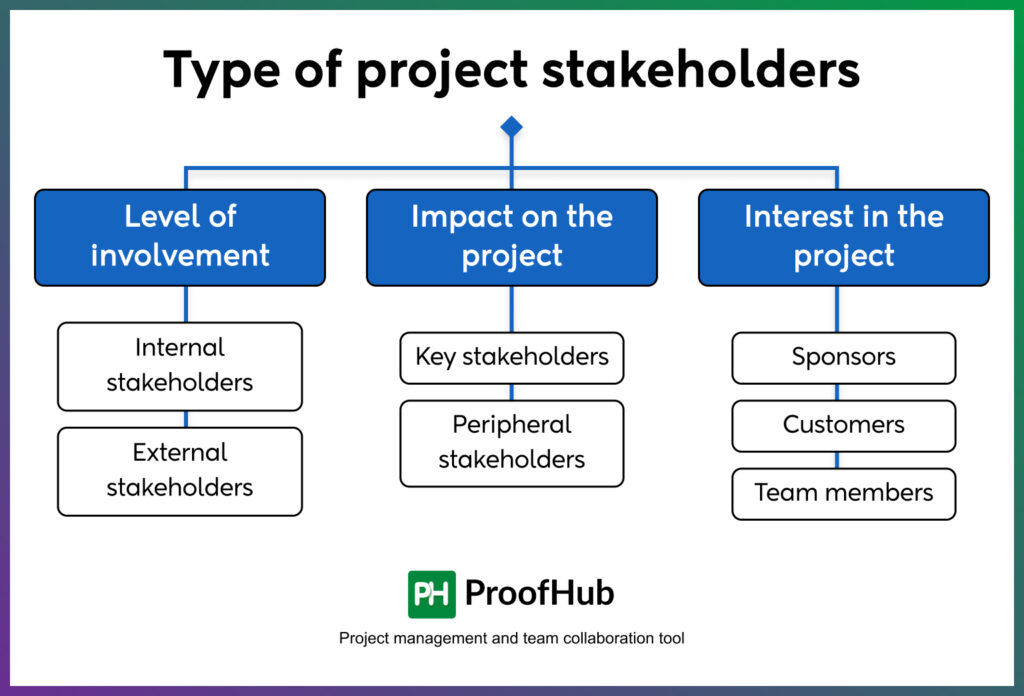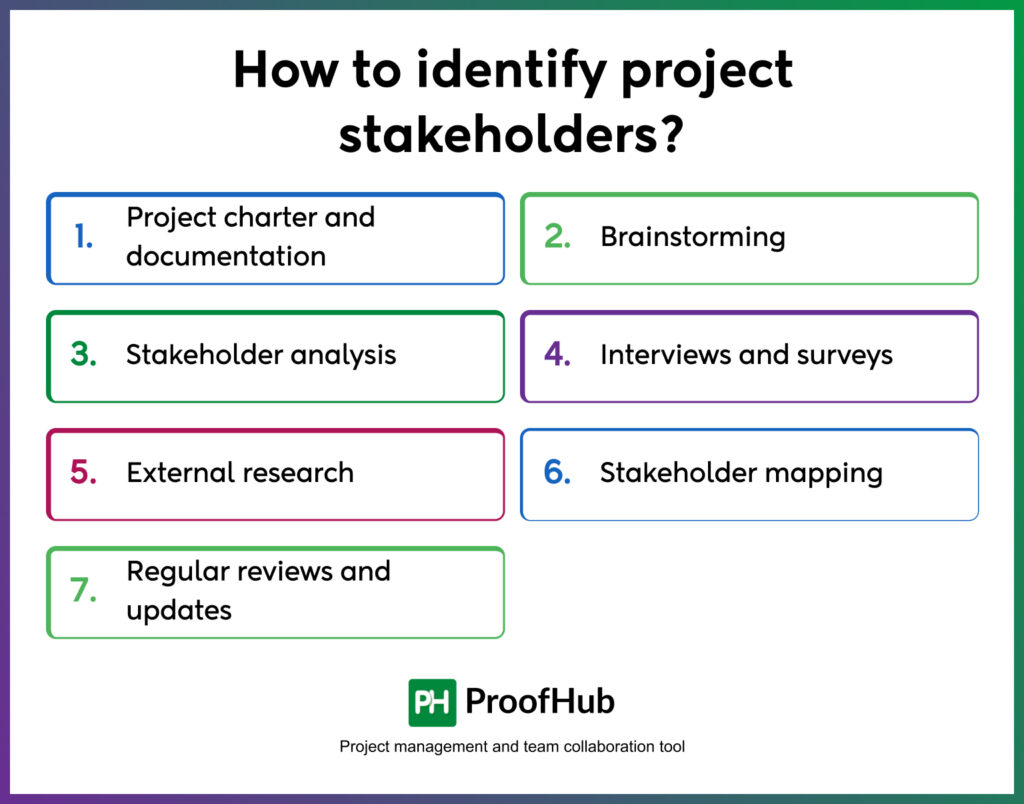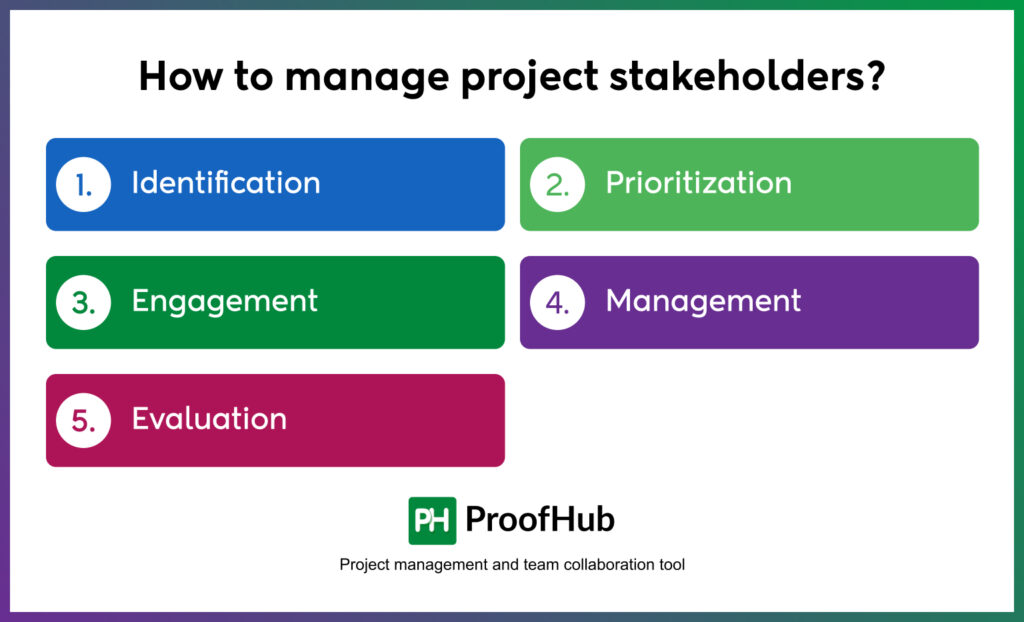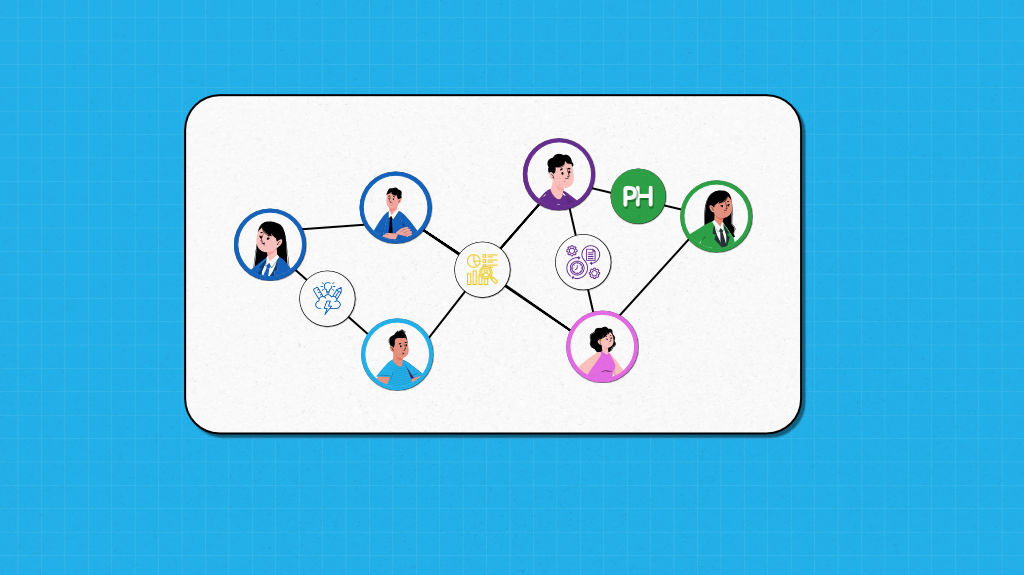Ever wondered who those people are who seem invested in your project, even if they’re not directly doing the work?
These individuals or groups are known as project stakeholders, and understanding who they are is critical to ensuring a project’s success.
In this article, you will learn everything about project stakeholders- who they are, what they do, and how to manage them. Understanding their roles and needs is vital for smooth sailing toward project success.
Whether you’re a seasoned project manager or just starting, this guide offers valuable insights to help you build strong stakeholder relationships, improve communication, and ultimately achieve your project goals.
Who are the project stakeholders?
Project stakeholders are individuals, groups, or organizations who have an interest in the project’s outcome or are affected by it. They may actively participate in the project, influence its direction, or be impacted by its results. Stakeholders can include team members, clients, sponsors, vendors, regulatory bodies, or even the community impacted by the project.
Why are stakeholders important in a project?
Project stakeholders play a crucial role in determining the success or failure of a project. They influence everything from the project’s objectives to its execution and delivery. Understanding their importance helps ensure that your project aligns with their expectations and receives the support it needs.
Here are a few reasons why stakeholder management is important
- Meeting objectives: Stakeholders often have specific needs, requirements, and expectations from the project. By engaging with them, you can make sure that these objectives are clearly defined and aligned with the project’s goals. This alignment boosts the chances of producing outcomes that meet stakeholders’ expectations. This leads to overall project success.
- Securing resources: Stakeholders control various resources. These resources include financial support, human resources, expertise, and approvals. Building strong stakeholder relationships and keeping them informed helps secure the support and resources needed at critical stages.
- Minimizing risks: Stakeholders can sometimes cause problems, such as not wanting to change things, having different priorities, and asking for things that you didn’t expect. By engaging stakeholders early and continuously, you can identify potential risks, manage expectations, and reduce the chance of conflicts or delays.
- Maintaining communication: To build trust and work well together, you need to communicate openly and honestly with everyone involved in the project. Keep everyone updated regularly on how things are going and any issues you’re facing. If anyone has questions or concerns, make sure to address them right away. By doing this, you can make sure everyone’s expectations are met and avoid any problems down the line.
What happens if you neglect project stakeholders?
- Project delays: If you don’t involve stakeholders or resolve conflicts, it causes delays in decision-making, approvals, or resource allocation. This means it takes longer to finish the project.
- Budget overruns: If stakeholder needs and priorities are not considered, it leads to unexpected changes in scope, additional requirements, or rework. This results in budget overruns and financial strain on the project.
- Increased risk of project failure: If stakeholder concerns are ignored, they may withdraw their support. This will jeopardize project funding or trigger resistance. This situation ultimately increases the risk of project failure or termination.
Read more: Don’t let risks hold you back! Check out our guide on the 11 best risk management software!
Type of project stakeholders

To manage your project effectively, it’s important to understand that not all stakeholders are the same. Stakeholders can be categorized in different ways based on different factors to better understand their roles, influence, and interests in the project.
Level of involvement
- Internal stakeholders: These stakeholders are directly involved in the project’s planning, execution, or decision-making processes. They typically include project managers, team members, and other employees within your organization who are responsible for delivering the project.
- External stakeholders: These stakeholders are indirectly involved in the project and may not be part of the organization executing the project. They can be customers, suppliers, regulators, government agencies, community members, or anyone else who might be affected by the project’s outcomes.
Impact on the project
- Key stakeholders: These stakeholders have the power to make decisions, provide resources and funding, or influence the project’s outcome. Some key stakeholders are project sponsors, top management, major investors, and regulatory bodies. Without their support, your project can face significant hurdles.
- Peripheral stakeholders: These stakeholders have a relatively lower impact on the project. They are not directly involved in executing the project, but their input and feedback are valuable. These stakeholders include minor investors, members of the local community, and other stakeholders who don’t have much influence over the project outcomes.
Interest in the project
- Sponsors: These stakeholders provide funding or resources for the project and have decision-making authority. They influence project priorities, scope, and budget.
- Customers: These are the end-users or beneficiaries of the project’s deliverables, such as products or services. They want the project to meet their needs, expectations, and quality standards.
- Team members: These stakeholders are directly involved in delivering the project’s objectives. They include project managers, team leads, and individual team members. They all play an important role in executing specific tasks and contributing their expertise, skills, and efforts to achieve project goals.
By categorizing stakeholders based on these criteria, you can better understand their needs, expectations, and how much influence they have. This will help you manage stakeholders more effectively and keep them engaged throughout your project’s lifecycle.
Read more: Stakeholder engagement plan: Definition, importance, steps, and tips for success
Examples of stakeholders in a project
As we have discussed before, there are various types of stakeholders. Let’s take a look at some common project stakeholder examples:
- Investors: These stakeholders seek financial returns and can include shareholders and debt holders. They invest capital in the business and expect to profit from it.
- Employees: These stakeholders depend on their jobs and job security. Employees have a direct interest in the organization as it enables them to earn a living and receive benefits.
- Customers: These stakeholders want to buy the product or service that the project provides. They expect the product or service to be of good quality and value.
- Suppliers and vendors: These stakeholders provide goods and services to the business managing the project. Their income is linked to the project’s success, which means that a successful project could bring more business for them.
- Communities: These stakeholders care about how a project may affect their health, safety, and economic growth. Organizations operating in their community can influence job opportunities, spending, and other factors.
- Government: These stakeholders benefit from projects through taxes and contributions to the gross domestic product (GDP). They collect taxes from both the company at a corporate level and from individuals employed by the company.
How to identify project stakeholders?

Identifying stakeholders in a project is an essential step to make sure the project goes smoothly. Here are some easy steps to help you identify stakeholders:
- Project charter and documentation: You should review project charters, project plans, and other project documentation. This will help you identify key individuals or groups who are directly or indirectly involved in or impacted by the project.
- Brainstorming: Conduct brainstorming sessions with project team members, subject-matter experts, and other relevant stakeholders to identify potential stakeholders. During these sessions, consider different perspectives and areas of influence both within and outside the organization.
- Stakeholder analysis: Conduct a stakeholder analysis. This will help you assess the level of interest, power, and influence of each identified stakeholder. You should categorize your stakeholders into primary stakeholders (directly impacted by the project) and secondary stakeholders (indirectly impacted but still have an interest).
- Interviews and surveys: Engage in one-on-one interviews or surveys with your project team members, sponsors, clients, and other key individuals. This will help you identify additional stakeholders and gather their insights and expectations.
- External research: Conduct external research to identify stakeholders who may be affected by the project. This includes industry experts, regulatory bodies, community groups, or other organizations with a vested interest.
- Stakeholder mapping: Create a stakeholder map or matrix or matrix to visualize and prioritize stakeholders based on their level of influence and interest in the project. This will help you prioritize stakeholder engagement and communication efforts.
- Regular reviews and updates: As a manager, you should keep your stakeholder list up-to-date throughout the project. So, continuously review and update the list throughout the lifecycle. New stakeholders may appear, and existing stakeholders’ roles or interests may change over time.
Bonus tips for identifying project stakeholders
- Use a stakeholder identification tool: There are several stakeholder identification tools, such as templates, available in the market. These tools can help you identify stakeholders and assess their level of influence.
- Involve the project team: The project team can be a valuable resource for identifying stakeholders. They may have knowledge of the company and the project that you don’t have.
- Be proactive: Don’t wait for stakeholders to come to you. Be proactive in identifying stakeholders and building relationships with them.
By identifying stakeholders properly, you can ensure effective communication, manage expectations, address concerns, and engage stakeholders appropriately throughout the project. This will increase the chances of project success.
How to manage project stakeholders?

When you are managing a project, one of the most crucial tasks is to manage all the stakeholders involved. It’s like a project within a project, and you can’t afford to make mistakes here.
Here are the key principles for effective stakeholder management:
- Identification: First and foremost, clearly identify all the stakeholders involved in the project.
This includes anyone who has an interest in the project’s outcomes, whether they are directly or indirectly affected or have an influence on its success.
- Prioritization: Once the stakeholders are identified, prioritize them based on how much influence and impact they have on your project.
This way, you can make sure that you give more attention and engagement to stakeholders who have higher levels of influence or impact throughout the entire project.
- Engagement: The next thing is to keep them involved, informed, and valued throughout the process. To do so, develop a tailored communication plan for each stakeholder group.
This plan should clearly outline the preferred communication methods, frequency of communication, and desired outcomes.
- Management: You should actively manage stakeholders by addressing their expectations, concerns, and feedback.
Also, proactively identify and prevent potential conflicts to maintain a positive project environment. Open and transparent communication can help you manage stakeholder relationships effectively.
- Evaluation: The final principle is to evaluate the effectiveness of communication strategies. Continuously monitor stakeholder engagement and satisfaction levels.
Use feedback and insights to improve your approach and build stronger stakeholder relationships. Regular feedback loops will help you identify areas for improvement and maintain positive relationships with your stakeholders.
By adhering to these key principles, you can mitigate risks and ensure that everyone is on the same page. So, make sure you keep your stakeholders in the loop and work together to achieve your project objectives.
Collaborate seamlessly with stakeholders using ProofHub
ProofHub is a powerful project management software for bringing together all your project stakeholders and facilitating quick collaboration among them.
With its intuitive and user-friendly interface, task management features, and real-time communication, ProofHub makes it easy for you and your team members to stay on the same page and work together towards a common goal.
Overall, ProofHub’s collaborative software helps teams like yours work efficiently and effectively, delivering successful project outcomes on time, every time.
Frequently asked questions
How do stakeholders’ roles change throughout the project life cycle?
Stakeholders’ roles often evolve as the project progresses. In the initiation phase, they may define goals and approve budgets. During planning and execution, they help make decisions, provide feedback, or monitor progress. By the closing phase, their focus shifts to outcomes, deliverables, and evaluation. Staying aligned with these changes helps keep everyone engaged and accountable.
Can someone be both an internal and external stakeholder?
No, a person cannot be both at the same time. Internal stakeholders are directly part of the organization managing the project, like employees or department heads. External stakeholders are outside parties such as clients, vendors, or regulators. However, one person can interact in both roles across different projects.
How can I prioritize stakeholders in a project?
Stakeholders can be prioritized based on their level of influence and interest. One common method is using a Power-Interest Grid to map who needs close management versus minimal effort. High-priority stakeholders typically have strong decision-making power or are significantly impacted by the project. Focusing attention where it matters most helps ensure smooth execution.

